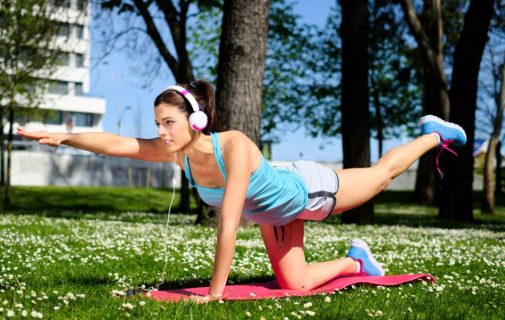Worry-free summer workout tips

Warm days and clear skies – it’s that time of year when many of us can’t get enough of the outdoors, and that includes moving our exercise routines outside. However, with the hot weather, those outdoor workouts can quickly turn disastrous if you overdo it.
“Everyone should get outside and enjoy the summer as much as possible!” says Dr. Zachary LaMaster, a family medicine physician at Advocate Illinois Masonic Medical Center in Chicago, Ill. “That being said, heat-related illnesses are common as the temperature increases in the summer months.” He also advises to always be aware of the temperature and stay hydrated.
Dr. LaMaster offers the following five tips to ensure you stay safe during summer workouts:
- Always have a bottle of water. Adequate hydration is essential during exercise because it allows our bodies to sweat when they need to in order to help us keep cool. If you plan to exercise, you should be drinking more, especially if it is warm. Basically, you should trust your thirst. If you feel thirsty, drink more water. Gatorade and other sports drinks are good for replenishing electrolytes but should not replace regular water. Remember to always watch the sugar content in your drinks.
- Protect your skin from the sun. If you plan to be outside on hot days, wear light colored, loose-fitting clothing, and don’t forget to wear sunscreen. Apply sunscreen with a minimum 25 SPF, and reapply it every 2 hours. Even on cloudy days, nearly 80 percent of the sun’s harmful rays can penetrate your skin, according to the American Academy of Dermatology.
- Know the warning signs of heat-related illness. The most important thing you can do is to listen to your own body and rest when you feel like you need to. Normal exercise should make you somewhat tired, but not exhausted to the point that it is difficult to continue the exercise. Other symptoms of heat-related illness include cramping, nausea, vomiting, diarrhea and changes in vision. If any of these symptoms develop during exercise in hot weather, stop the exercise and seek cooler temperatures. More severe symptoms include confusion, hallucinations, dizziness and syncope (fainting). These are signs of more serious problems leading to organ failure, and you should seek medical help immediately.
- Don’t overdo it. It’s important to remember that exercising on hot days is dangerous for practically anyone, despite fitness levels. A heat index of 95 degrees or above puts everyone at increased risk for heat-related illness. Be aware of the actual temperature – not just your personal limits – and try to exercise during cooler times of day. The hottest parts of the day are generally from 10 a.m. – 4 p.m.
- Let your body adjust to the new environment. When you move your workouts outside, your body has to cope not only with the heat but also with new surroundings and surfaces. Always ease into fully outdoor workouts, especially if you’re switching to running or playing sports on pavement after months indoors. And no matter the time of year, always be sure to warm up and cool down properly when you exercise to avoid injuries and overexertion.
Related Posts
Comments
One Comment
About the Author
Sophie Mark, health enews contributor, is a Public Affairs Intern at Advocate Illinois Masonic Medical Center in Chicago. She is also a student at Loyola University Chicago, where she is completing her degrees in Advertising/Public Relations and English. In her free time she loves reading, baking, and exploring the city.


















Nice job Dr. LaMaster!! & Ms. Mark!